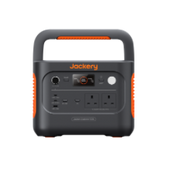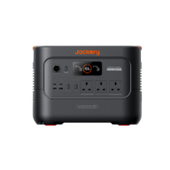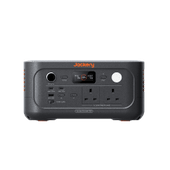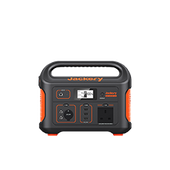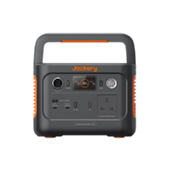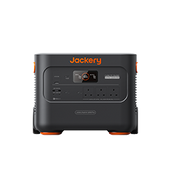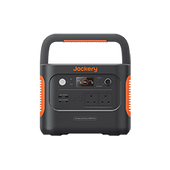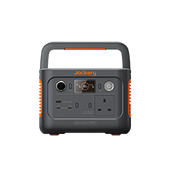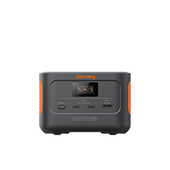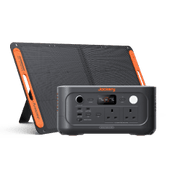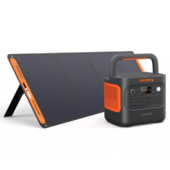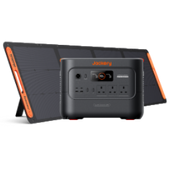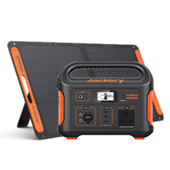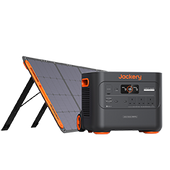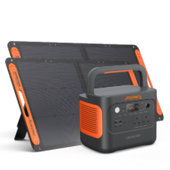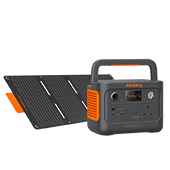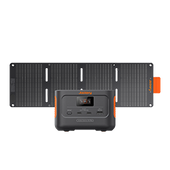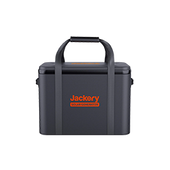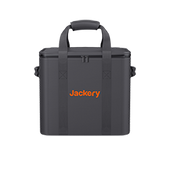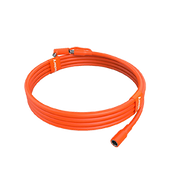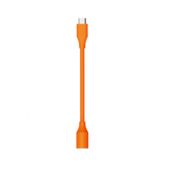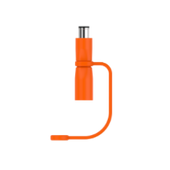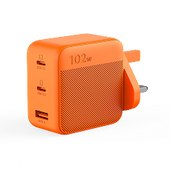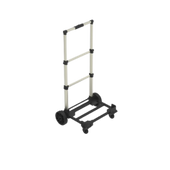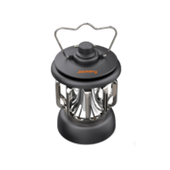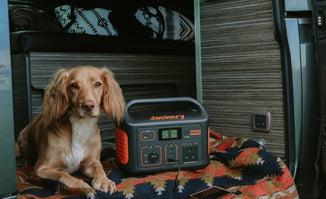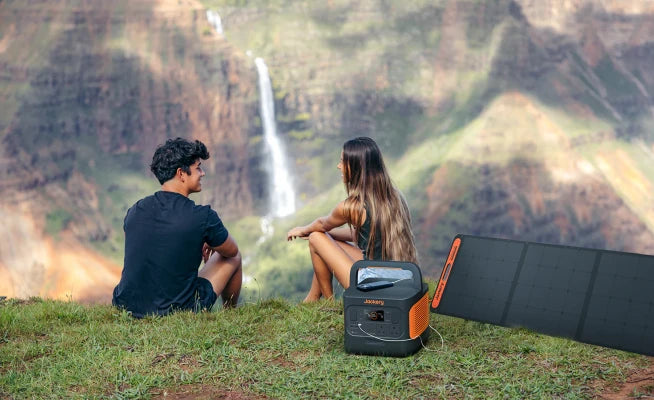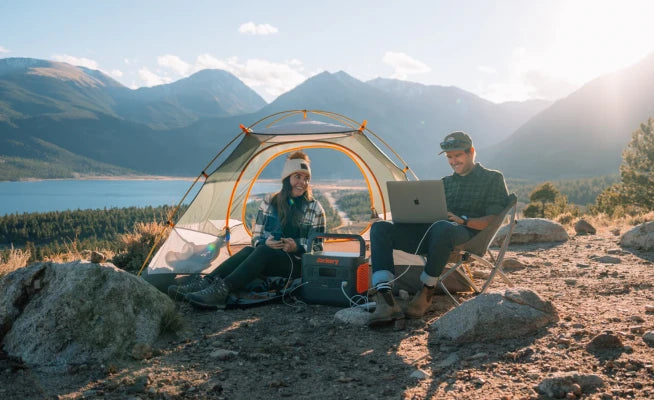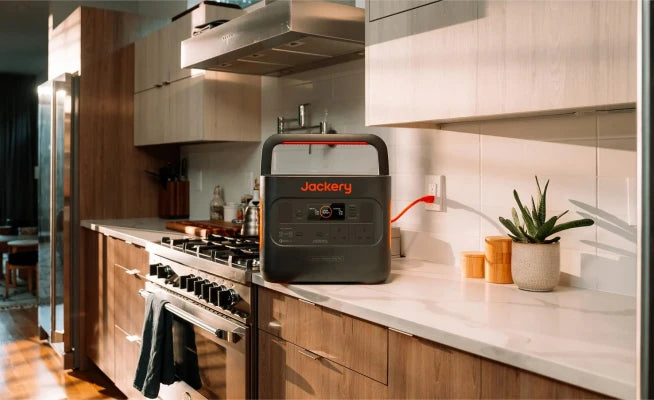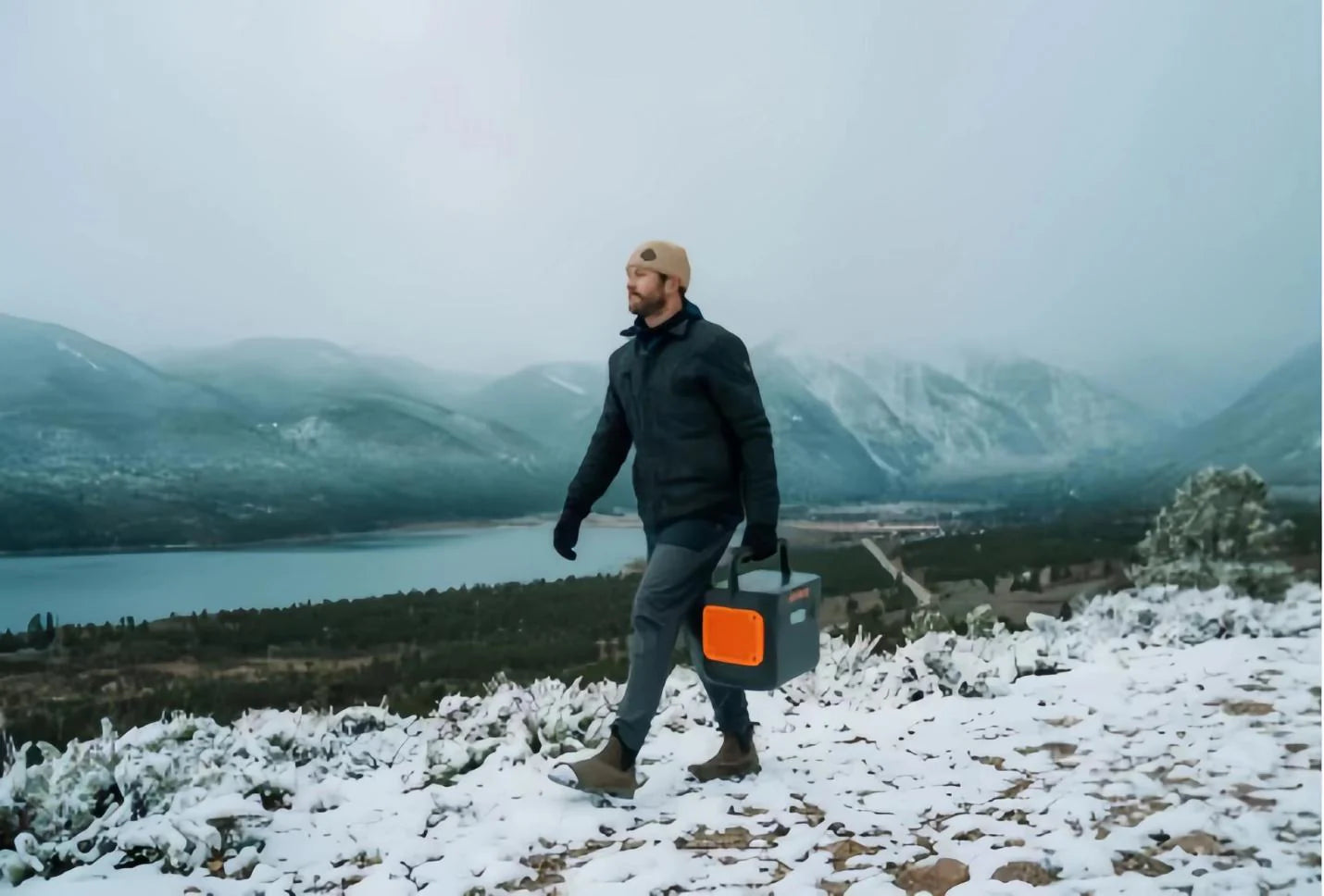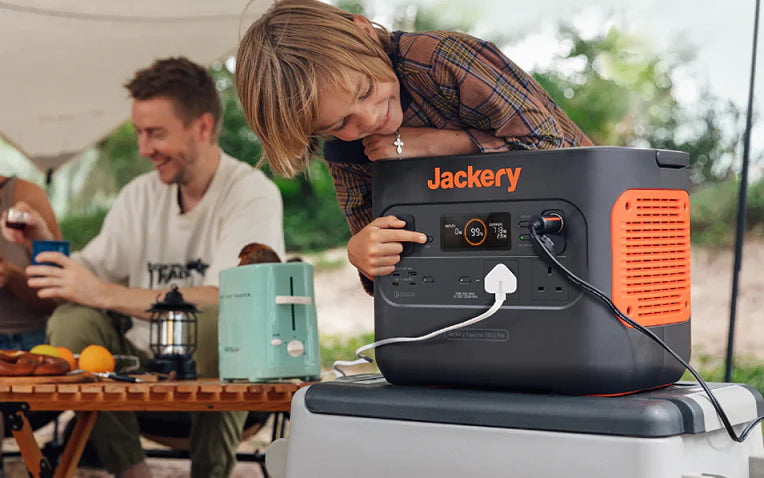Shifting gears is a skill any motorcycle rider needs to maintain a smooth and safe ride. It usually involves timing, precision, and understanding the symbiotic relationship between engine power and motorcycle riding. If you are an experienced motorcycle rider, you may not even bother with a simple riding operation like shifting gears.
But as a beginner motorcycle rider, you must understand the specific steps and practice constantly. This guide will explain the process of shifting gears on a motorcycle and guide you through its specific steps, safety tips, and common mistakes.
We also recommend the Jackery Portable Power Station as a nice piece of motorcycle touring gear for powering electronics and devices on the road, such as phones, radios, GPS devices, drones, etc.
|
Key Takeaways: |
|
- The right gear gives your motorcycle enough power to match your needed speed. - Shifting steps for manual and semi-automatic transmission motorcycles. - Here are some safety tips for shifting gears while riding a motorcycle. - Even experienced motorcycle riders have key mistakes to avoid when shifting gears. - Whether riding in rain, strong winds, ice or snow, you need to slow down in advance and anticipate the gear you need. - We recommend Jackery Explorer 300 Plus or 240 v2 portable power stations for powering your motorcycle touring electronics with more excellent durability and capacity. |
Basics of Motorcycle Gear Shifting
As a motorcycle rider, you must master the essential riding skill of shifting gears. Although many think shifting gears on a motorcycle is difficult, it can be learned through practice. Before understanding the specific steps of shifting gears, please first understand the basic knowledge related to shifting gears on motorcycles.
Components Involved in Shifting Gears on a Motorcycle
Motorcycle shifting gears usually involve three main components, such as the clutch, throttle and gear shift lever, working together to control the speed and power of the motorcycle. Before delving into the details of motorcycle shifting gears, you can familiarise yourself with these components that play a key role in this process.
|
Motorcycle Parts |
Function |
|
Clutch |
It can interrupt or transmit power. |
|
Throttle |
It can adjust the speed of the motorcycle by controlling the engine speed. |
|
Gear Shift Lever |
It can change the transmission ratio by switching the transmission gear combination to achieve different gears. |
If the motorcycle has a semi-automatic transmission, only the throttle and gear shift lever are involved in shifting gears.
Why Do Motorcycles Need to Shift Gears?
Motorcycles must shift gears for several reasons, including adjusting power output, protecting mechanical components, optimising driving experience, and fuel efficiency.
Matching Power Requirements
Generally, the higher the motorcycle's gear, the faster the speed. However, the lower the motorcycle gear, the faster the acceleration. You can change a bike's gear to a low or fast speed according to the road and traffic conditions.
|
Motorcycle Gears |
Features |
Applicable Scenarios |
|
First Gear |
Getting Started |
Starting Low-speed maneuvers |
|
Second Gear |
Proper Driving Begins |
Low-speed maneuvers Strict speed control in traffic or residential areas |
|
Third Gear |
Flexibility in Speed |
City riding with varying speeds |
|
Fourth Gear |
Finding a Groove |
Country roads Light highways |
|
Fifth and Sixth Gears |
High-Speed Riding |
High-speed riding Highways |
Protect the Engine
Driving in the wrong gear for a long time (such as using a low gear at high speed or a high gear at low speed) will cause the motorcycle engine to overheat and wear out more.
Improve Driving Safety
Reasonable gear shifting can help the motorcycle avoid stalling or sudden acceleration due to insufficient power. Timely gear shifting can improve motorcycle safety, especially on slippery roads or long downhills.
In short, the right gear can allow the motorcycle engine to operate without excessive pressure but with enough power to match the speed requirements.
Step-by-Step Guide to Shifting Gears on a Motorcycle
Shifting motorcycle gear is a skill that requires a combination of motorcycle mechanics and rider intuition (or muscle memory). However, how to shift gears correctly will also depend on whether your motorcycle has a manual or semi-automatic transmission.

Steps for Shifting Gears on a Manual Transmission Motorcycle
Shifting gears on a manual transmission motorcycle requires coordinated clutch, throttle and shift lever operation. Here are the specific steps for shifting gears on a manual transmission motorcycle:
Step 1: Start Before Shifting
Squeeze the clutch lever in your left hand to disconnect the engine from the transmission. Then, use the tip of your left foot to press the shift lever down to shift to first gear (most motorcycles change from neutral to first gear). Slowly release the clutch lever while turning the throttle lever to the right to increase the motorcycle's power. When the motorcycle starts to move, you need to keep the throttle steady and release the clutch completely.
Step 2: Shift up While Driving (low gear → high gear)
After accelerating to the speed corresponding to the target gear (for example, 2000-3000 rpm), you need to release the throttle and squeeze the clutch quickly. Then, you also need to lift the shift lever as high as possible with your left foot to shift up one gear at a time. For example, you shift up a gear each time you push the shift lever slightly upward (e.g., from first to second gear). After shifting gears, you must release the clutch and gradually increase the throttle to ensure the speed matches.
Step 3: Downshifting While Driving (high → low gear)
If you want to downshift while the motorcycle moves, squeeze the clutch while slowing down. Then, you must quickly press the shift lever with your left foot to downshift in sequence and gradually adjust the clutch and throttle to match your current motorcycle speed.
If you want to slow down, slowly release the clutch and adjust the throttle to restore power.
If you want to stop, keep the motorcycle's throttle closed, hold the clutch, and press and release the shift lever until you shift to first gear.
Steps for Shifting Gears on a Semi-Automatic Transmission Motorcycle
Control the engine throttle and operate the shift lever if you want to shift gears on a semi-automatic transmission motorcycle. Here are the specific steps for shifting a motorcycle with a semi-automatic transmission:
Step 1: Start Before Shifting
First, ensure the motorcycle is in neutral, then increase the throttle. Then, you can shift the motorcycle into the first gear by moving the shift lever down one gear. Usually, you can change into higher gear by moving the shift lever up on a motorcycle.
Step 2: Shifting Up While Moving (low gear → high gear)
Just like shifting into first gear on a semi-automatic transmission motorcycle, you can shift up very simply. You must lift the shift lever with your foot while increasing the throttle. You will shift into the next gear whenever the lever is moved up. For example, if you move the shift lever up once when the motorcycle is in first gear, you will shift into second gear.
Step 3: Shifting Down While Moving (high gear → low gear)
If you want to shift down on a semi-automatic transmission motorcycle while moving, release the throttle and press the shift lever to shift down one gear at a time. For example, you can go from fourth gear to third gear by pressing the shift lever once. If you are parking, always put the motorcycle in neutral when you park.
Safety Tips for Shifting Motorcycle Gear
Motorcycle riding safety often involves your riding habits, especially gear shifting. Here are some essential safety tips for gear shifting when riding a motorcycle:

Safety Tip 1: Match the Gear to the Speed
High gear and low speed or low gear and high speed will affect handling and engine life, so ensure the gear matches the vehicle's speed. For example, if the motorcycle is at a low speed, use a low gear such as 1-2. If the motorcycle travels at a high speed, use 5th or 6th gear.
Safety Tip 2: Coordinate the Throttle and Clutch
Coordinating the throttle and clutch can achieve smooth acceleration from one gear to another. For example, when releasing the clutch to change gears, you need to gently release the throttle and then push the throttle back smoothly when releasing the clutch.
If you operate the throttle and clutch simultaneously, the engine will likely idle, or the vehicle will shake.
Safety Tip 3: Downshift Gradually When Slowing Down
Under no emergency conditions, downshift gradually when slowing down your motorcycle, such as from third gear to second gear to first gear, rather than directly from third gear to first gear. When shifting your motorcycle, the rear wheel will likely slip or lose control if you jump directly from high to low gear.
Safety Tip 4: Downshift in Advance to Cope with Complex Road Conditions
When riding a motorcycle, the downshift is done in advance to increase torque and control when turning, going downhill, or encountering obstacles. It can also prevent the motorcycle from losing control during emergency braking. In particular, you should not shift gears when the motorcycle turns, which may disrupt its balance and cause instability.
Safety Tip 5: Regular Inspection and Maintenance
Only motorcycle parts in good condition can ensure smooth and stable gear shifting, so please check the status of the clutch, shift lever and gear system (chain) regularly. If you find abnormal phenomena, such as abnormal noise, jamming, etc., in these parts, please repair them in time.
Mistakes to Avoid When Shifting Gears on a Motorcycle
Common mistakes when shifting your motorcycle can seriously affect your safety. Even experienced motorcycle riders can make mistakes when moving. Here are the key mistakes to avoid when moving your motorcycle:

Forgetting to Shift into First Gear When Parking
If you don't shift down to first gear when parking (but instead leave it in high gear), you may stall when you try to start again or even cause other, more serious, dangerous situations.
If you don't shift into gear when parking on a slope, you may cause your motorcycle to roll down the hill and crash or lose control when emergency rescue is needed.
Skipping Gears Without Skill
While experienced riders may skip gears in certain situations, it is not recommended for beginners. Skipping gears can cause engine or transmission damage or even loss of control if you don't fully understand the motorcycle's performance and controls.
Shifting Too Early or Too Late
Shifting your motorcycle too early or too late can cause significant damage to vehicle performance, fuel efficiency, and mechanical components. If a motorcycle shifts gears too early at low speeds, the torque will drop, the vehicle will have difficulty accelerating, and getting stuck in a specific gear will be easy.
To shift gears correctly, pay attention to the engine's sound. When the engine starts to whine, it is a sign that you need to change gears.
Incomplete Shifting into Gear
It is possible for a motorcycle not entirely to shift into gear during the gear-shifting process. This phenomenon is usually called "not in gear" or "stuck between two gears." For example, novice riders may cause the gear to be stuck in the middle position. At this time, the vehicle may experience power interruption or abnormal noise in the transmission system.
Motorcycle Gear Shifting Tips in Different Environments
Environmental conditions can significantly impact how difficult it is to shift your motorcycle and your overall riding experience. Adjusting your motorcycle shifting strategy to various weather conditions is essential to staying safe.
Motorcycle Shifting Tips for Riding in the Rain
When riding in the rain, pay special attention to safety and stability when shifting your motorcycle in combination with the characteristics of slippery road conditions. The following tips can help you improve the control efficiency of motorcycle shifting and reduce risks in wet conditions:
Tip 1: The friction of the road surface decreases on rainy days, so you need to slow down in advance, predict road conditions (such as curves and waterlogged areas), and predict gear requirements. If you need to stop, expect a longer stopping distance and downshift in advance when approaching the parking point.
Tip 2: On rainy days, prioritise driving in low gear (1-3 gears) to reduce frequent gear shifting. If you need to overtake or speed up, you can briefly shift to 4th gear but immediately return to safe gear after completion.
Motorcycle Shifting Tips for Riding in Windy Weather
If you need to shift gears on your motorcycle when riding in windy weather, you must ensure its power output is stable and prevent loss of control. The following tips can help you ensure safety when shifting gears on your motorcycle in strong winds:
Tip 1: Strong winds may suddenly increase or decrease, so please shift gears in advance to keep the power output stable and avoid insufficient power or loss of control.
Tip 2: Low gears usually provide better stability and control in strong winds. Crosswinds are the most dangerous, so please hold the motorcycle's handlebars tightly and lean your body appropriately to maintain balance.
Motorcycle Shifting Tips for Riding in Ice and Snow
Riding a motorcycle on ice and snow is generally not recommended because the road surface at this time will cause the motorcycle to have a reduced grip, and the risk of falling or injury is too high. But if you must ride, please follow the following safety tips:
Tip 1: When starting the motorcycle, please shift to a higher gear, such as 3rd gear, to reduce wheel slippage. Complete the gear shift before entering a curve or complex road conditions to avoid operating on dangerous roads.
Tip 2: If you have to use engine braking, please avoid downshifting too much at one time to cause the rear wheel to lock.
In short, please adjust your gear-shifting method at any time according to the actual riding situation. If the weather is too bad and unsuitable for motorcycle riding, please pull over without hesitation.

Jackery Portable Power Stations for Motorcycle Touring
Motorcycle touring often involves camping or staying in locations without reliable access to electrical outlets. A solar generator provides a self-sufficient power source, crucial for charging essential devices like smartphones, GPS units, cameras, and even small appliances.
Maintaining communication is vital for safety, especially in remote areas. A solar generator ensures you can keep your phone and communication devices charged. We highly recommend the Jackery Portable Power Station for powering essential appliances and electronics with solar energy.
|
Appliances |
Working Hours |
|
|
Explorer 300 Plus |
Explorer 240 v2 |
|
|
Mini Fridge (90W) |
2.5H |
2.1H |
|
Drone (90W) |
5 Charges |
4.5 Charges |
|
Mobile Phone (29W) |
13 Charges |
11 Charges |
|
GPS Device (30W) |
5.9H |
5.2H |
|
Smartwatch (5W) |
15.7H |
14H |
(*The working hours are only for reference; the actual working hours depend on your usage.)
Jackery Explorer 240 v2
Constructed with a robust LiFePO4 battery that offers a lifespan of 10 years, the Explorer 240 v2 guarantees dependable operation after 3,000 charge cycles. This compact powerhouse has 256Wh of energy and weighs only 7.7 lbs, ensuring you remain charged while on outings. With a robust 300W AC output, charging vital gadgets is now effortless.
- One-Hour Fast Charging: Efficient, one-hour rapid charging, initiated by an application, enables a complete charge of the Explorer 240 v2 Portable Power Station within one hour. Recharging from 0% to 100% requires about two hours using an AC wall outlet, promoting a healthy battery lifespan, but a complete charge via SolarSaga 100W solar panels necessitates 3 hours.
- Multiple Charging Ports: The Explorer 240 v2 features 100W PD USB-C ports, enabling direct USB-C fast charging for various electrical devices without needing an additional power brick. Numerous charging connections provide the concurrent charging of multiple devices, while an integrated camping light serves as a motorcycle touring companion and an emergency illumination solution.
- SMART App Control: The highly customisable Explorer 240 v2 is designed to fulfil unique requirements. It features changeable elements such as automatic shut-off and battery conservation mode, ensuring a tailored experience. The intelligent application facilitates monitoring your device's status, including the remaining battery level, over WiFi or Bluetooth connectivity.

*Review from Our User
I submitted my order just before the hurricane, but fortunately, it was not required. It charged perfectly. The application operated as anticipated. The WiFi connection has been established. The interface offers plenty of information. It includes a practical LED light. I evaluated its performance by positioning my substantial desktop upon it, which functioned quite well.
Jackery Explorer 300 Plus
The Jackery Explorer 300 Plus portable power station is a lightweight and efficient power source with a 288Wh capacity that fulfils energy requirements for diverse scenarios, including motorcycling, picnicking, hiking, camping, power outages, and more.
- Multiple Outputs to Charge Devices: The Explorer 300 Plus is a portable power station featuring a 300W AC Pure Sine Wave Inverter (600W Surge Peak) and a capacity 288Wh. Its 1 AC, 1 USB-A, and 1 USB-C output can charge four devices simultaneously, making it quick and easy to charge multiple appliances.
- Superior Safety Technology: This power station features a distinctive Battery Management System (BMS). The gadget incorporates 52 safety measures and 12 BMS algorithms that collaboratively provide the utmost safety for both the device and any connected appliances. It includes four types of physical security to guarantee the safety of all individuals.
- Compact and Innovative Power Supply: This model is distinguished by its sophisticated app control feature, which enables users to manage the battery efficiently via WiFi or Bluetooth. This renders it more contemporary and user-friendly. Weighing merely 8.27 pounds, it is an exceptional option for individuals frequently engaged in outdoor adventures or extreme weather conditions.

Review from Our User:
Before giving this product a stellar rating, I need to point out that I acquired it at a competitive price. The product arrived in a beautifully presented box with a high-quality carrying case. I initially purchased the Jackery Explorer 300 for general use but quickly discovered it is underrated. This product exceeds expectations with a maximum rating of 300 watts and a peak of 600 watts.
Motorcycle Gear Shifting FAQs
The following are the frequently asked questions about motorcycle gear shifting in the UK:
1. Do I need to use the clutch when changing gears?
If the motorcycle has a manual transmission, the clutch changes gears. It is mainly used to disconnect or connect the power transmission between the engine and the gearbox. If you force the gear change without using the clutch, the gears may wear more and even break, and the gearbox may need to be replaced in severe cases.
2. How can I change gears without using the clutch?
The clutch is not required when changing gears if the motorcycle has a semi-automatic transmission. The semi-automatic transmission motorcycle system has integrated the clutch and gear shifting, enabling a seamless transition of gear shifting.
3. Can I shift directly from the 4th gear to the 1st gear?
If you want to stop, you can shift directly from 4th gear to 1st gear. However, it is not recommended that you do so while riding a motorcycle. Downshifting directly from the 4th gear to the 1st gear without correctly matching the speed may damage the transmission gears, synchronisers, or drive shafts. In addition, a sudden downshift will cause a braking effect, which may cause the motorcycle to spin out and slide sideways, especially on slippery roads.
4. Will the motorcycle stall when changing gears?
The motorcycle will likely stall when changing gears. There are many reasons why motorcycles stall when changing gears.
The clutch is not completely disengaged.
The oil supply is not smooth (such as if the oil pump is stuck or the carburettor is blocked).
The transmission chain is loose, the valve clearance is too large, or the cylinder sealing is poor.
The throttle and clutch are not adequately coordinated when the novice shifts gears.
Final Thoughts
Shifting gears on a motorcycle may seem like a challenge that is difficult to master, but it is a simple process. You will soon become a skilled motorcycle rider who can change gears by understanding the essential components of shifting gears, such as the clutch, throttle, and gear lever, and practising the step-by-step process of upshifting and downshifting. If you master shifting gears, you will find that smoothly shifting motorcycle gears is just a skill that requires a combination of familiarity with the mechanics of the motorcycle and the rider's intuition and even muscle memory.

